This post is about pain. More specifically, it’s about relieving societal and/or market pain through credentialing. Every successful credentialing program is a response to pain.
Professional credentials assure the public, for example, that medical practitioners meet minimum competency requirements.
The consequences of incompetent medical care to society are painful in every sense of the word. Licensure, a specific kind of credentialing, protects public safety and welfare.
Credentialing relieves market pain as well.
A computer coder with a technical certification—another type of credential—is often a better-qualified job candidate than a non-certified job seeker.
It’s easier for employers to identify certified candidates, thereby reducing the time and expense (pain) of finding qualified talent.
Law #1: Identify the Primary Problem the Market Will Pay You To Solve
Developing a new credentialing program can be expensive and lengthy, often costing hundreds of thousands of dollars with development timeframes ranging from 6 to 18 months.
Managing the human resources involved in bringing a new credential to market—sponsor staff, stakeholders, consultants, subject matter experts and beta testers—further adds to the scale and complexity.
In a perfect world, revenues from credential examinations and ancillary services like training would pay for the operating costs of the program. Lenora Knapp, author of The Business of Certification, reports, however, that it often takes five years for most credentialing programs to reach breakeven.
Credentialing is a risky, high-stakes business representing significant investment. Yet many programs struggle. Others fail. How could that be given the considerable resources and smart people behind them?
Market Pain Matters
Per Knapp, the most common reason for the failure of a credentialing program is market research that was either substandard, anecdotal or skipped altogether because the credentialing committee decided to forego the expense of such research, usually in the range of $30,000 to $80,000.
That decision was often justified by the committee’s belief that its intimate knowledge of the target market needs (pain) made such research unnecessary.
Market research is foundational because it reveals the pain that the target market will pay to relieve or possibly eliminate.
Payment is important. It signals market intent and resolve. A motivated market willing to pay for a solution drives the longevity and financial viability of any credentialing program.
Credentialing programs have been launched for noble reasons like raising the status of a particular profession. When polled, members of the target market often agreed with the noble goal but weren’t willing to pay for certification. The status of the profession wasn’t a pain point for them. It wasn’t a problem that needed to be solved.
In our next week’s blog post, we’ll review two case studies of credentialing programs. One succeeded.
Find out why next time. Just so you know, market pain was involved.








